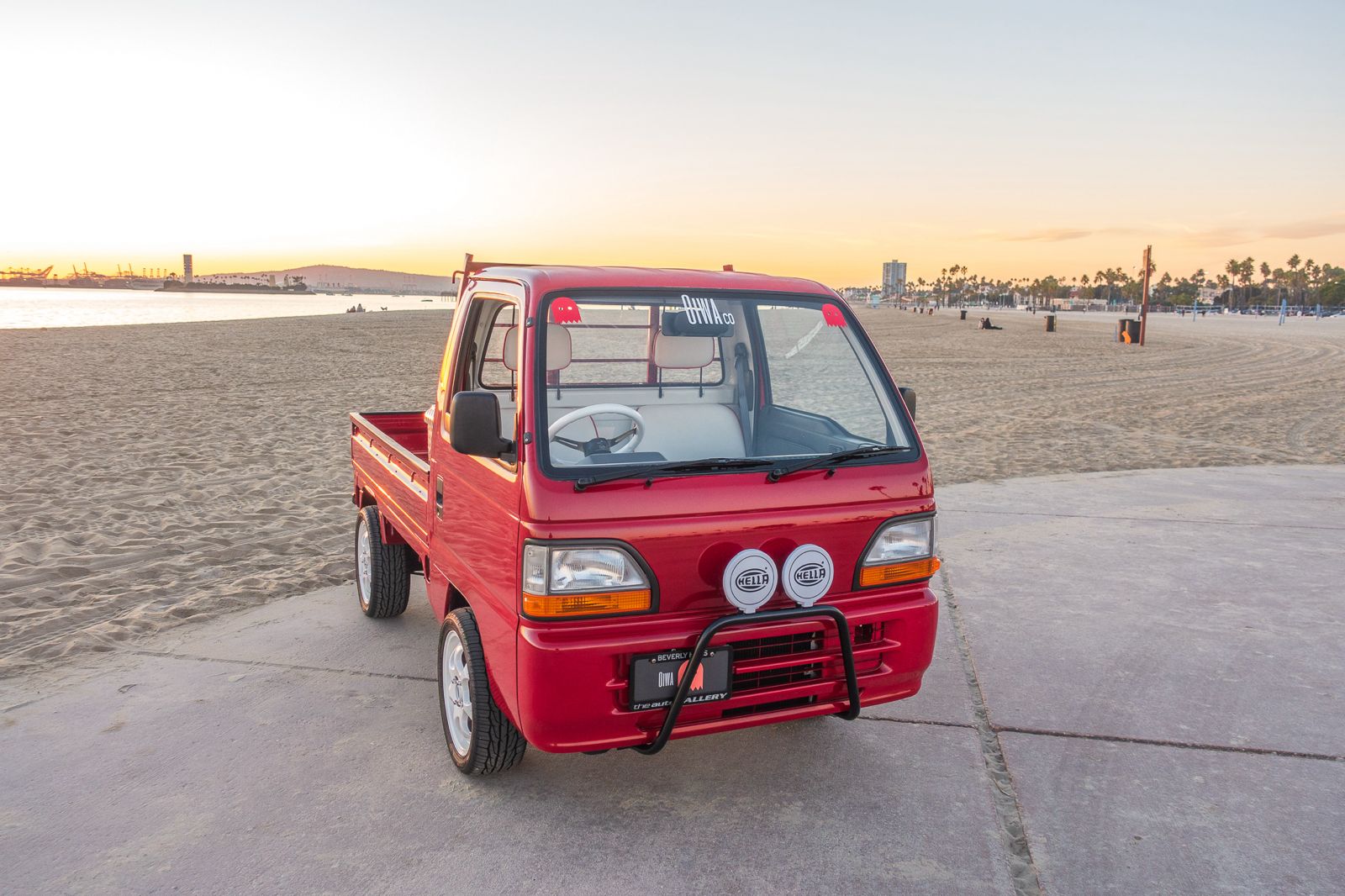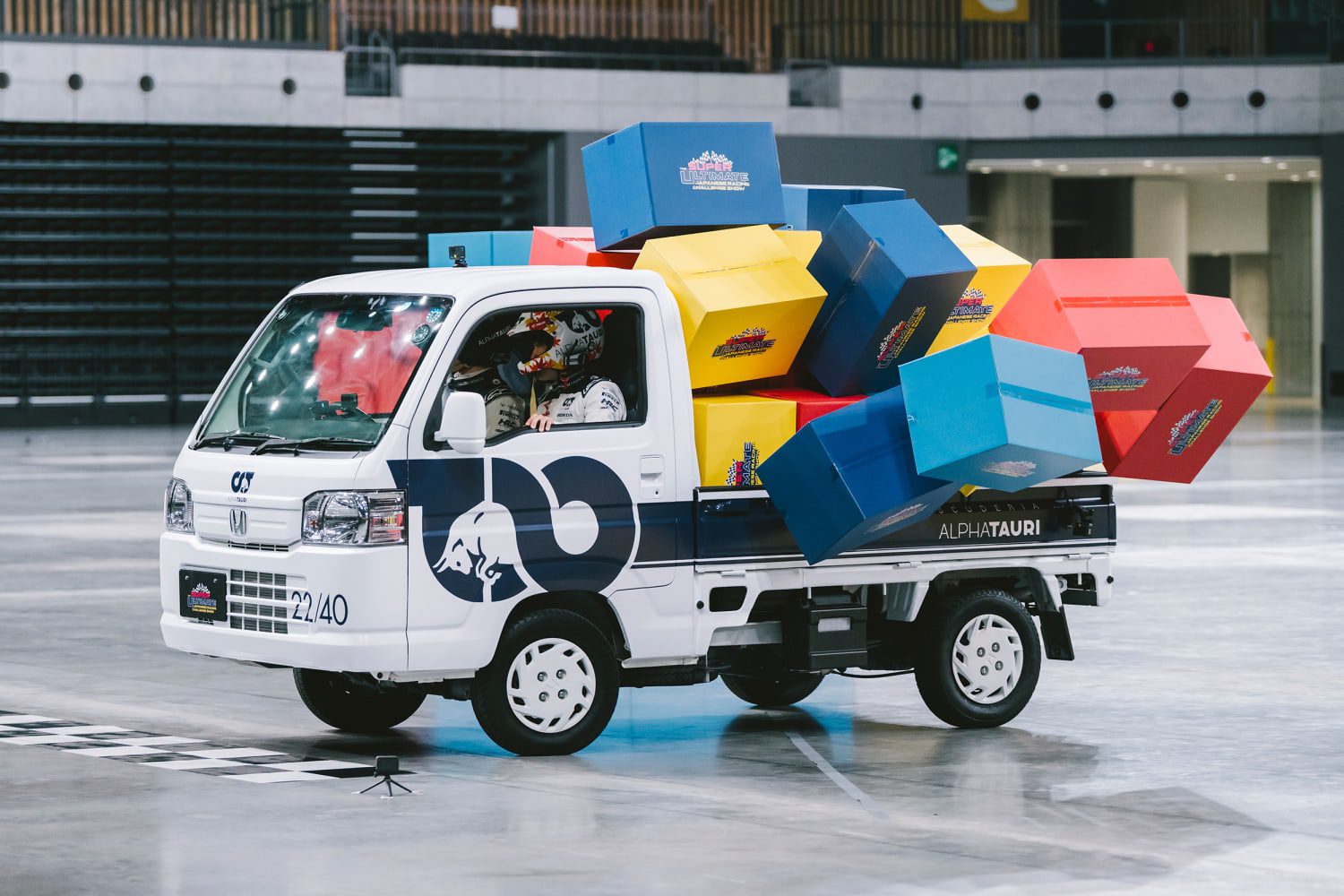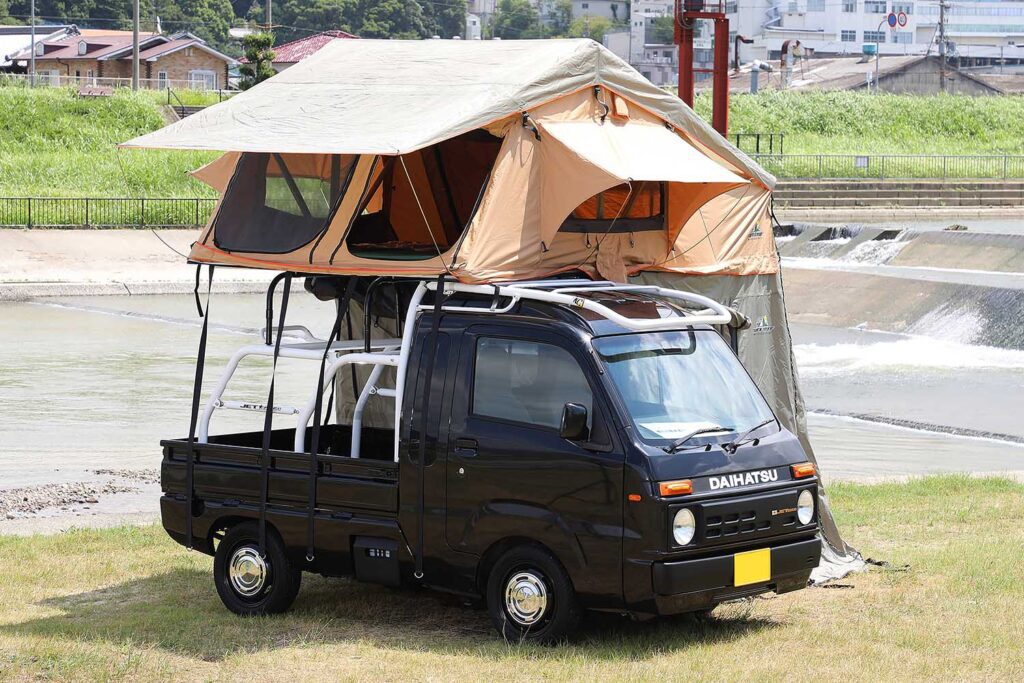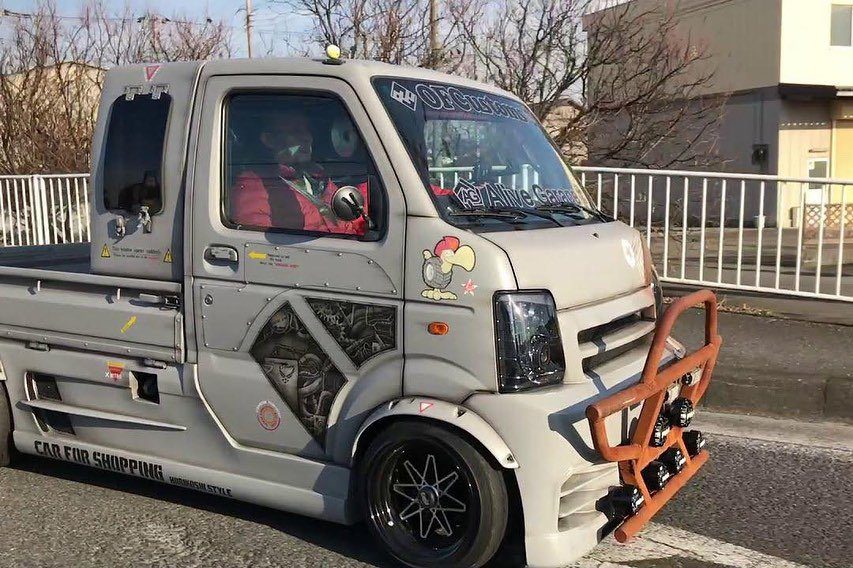When you’re out on the roads or you think about trucks in North America, you can probably picture any number of domestic vehicles such as the Ford F-150, Chevy Silverado, or RAM 1500. However, there’s a different kind of pickup that’s been gaining popularity in North America: the Japanese Kei truck.
These mini trucks are smaller, quirky, and surprisingly useful for owners despite their size.
They were originally invented and built for the narrow streets of Japan but have since begun to carve out a niche in the U.S. market. Why are they gaining popularity for folks like farmers, business owners, and even car enthusiasts?
We’ll dive into why Kei trucks are worth a second look.
What Is a Kei Truck, Exactly?

Japan has strict size and engine regulations for specific categories of vehicles. Kei trucks (also known as Keijidōsha in Japanese), In order to qualify and meet these OEM requirements, these trucks are capped at an engine no larger than 660cc, stay under 11 feet long, and meet specific horsepower limits.
Common Kei Trucks models include the Suzuki Carry, Honda Acty, Daihatsu Hijet, and Subaru Sambar. They’re offered in flatbeds, dump beds, or van configurations to suit a variety of use cases, so you’ll find that they’re used for everything from agriculture to delivery services.
Use cases are very similar in the United States where they’re quickly becoming a cheaper alternative for cost-conscious drivers.
Why Kei Trucks Are Catching On in the U.S.
Budget-Friendly Utility

New trucks are expensive, and even compact trucks like the Ford Maverick or Hyundai Santa Cruz can easily hit the $30K mark. However, you might be surprised to learn that you can find used Kei trucks in good condition for anywhere between $6000 to $10,000.
These compact sized vehicles are incredibly fuel-efficient (think 40 MPG), plus they cost less to insure and maintain. The only caveat is that they are imported JDM (Japanese Domestic Market) vehicles, so they’ll have considerations to be aware of, which we’ll talk more about.
Surprisingly Practical and Big on Personality
Kei trucks can handle a lot and have varying features that make them utility machines. With beds that tilt, fold, or dump, they’re great for hauling mulch, tools, and even light machinery. Landscapers, campground owners, and hobby farmers are finding them perfect for daily tasks.
Kei trucks are also undeniably fun. Their small proportions, boxy styling, and right-hand drive layout make them stand out. They’re conversation starters at car meets and farmer’s markets alike. Enthusiast communities on YouTube, Reddit, and Facebook are thriving, offering tips on mods, maintenance, and customization.
Easy to Import
Thanks to the 25-year import rule in the U.S., many Kei trucks from the 1990s and early 2000s are now eligible for legal import. And the process isn’t as intimidating as it sounds as specialty dealers and online platforms can handle most of the legwork, from auctions to delivery.
Off-Road Capable (Yes, Really!)

Due to their light weight, short wheelbase, and available 4WD systems, Kei trucks can be surprisingly capable off-roaders. Many owners lift them, add all-terrain tires, and convert them into trail-ready rigs or micro overlanders.
How Are Americans Using Kei Trucks?
The short answer: creatively.
- Small farms use them as efficient runabouts for feeding animals, moving supplies, or accessing tight trails.
- Campers and hunters appreciate their ability to navigate narrow forest paths.
- Mobile businesses such as coffee carts or tool vendors have converted them into eye-catching service vehicles.
- Urban couriers are starting to see the appeal for navigating crowded downtown cores.
Their size also makes them perfect for use in large properties, gated communities, or resorts where full-size trucks feel excessive.
What to Consider Before Buying One
Kei trucks offer a lot, but there are a few things to be aware of:
- Highway Use: Many states restrict Kei trucks from driving on highways or limit them to off-road or agricultural use only. Be sure to check local laws before buying.
- Safety Standards: Most Kei trucks lack airbags and don’t meet modern U.S. crash test regulations. That doesn’t make them unsafe, but they’re definitely built to a different standard.
- Parts Availability: While some parts are shared with U.S. models or available through importers, repairs might require a bit more planning.
- Right-Hand Drive: Driving from the right seat is legal in the U.S., but it can take some getting used to especially when passing or going through a drive-thru.
Buying One and Sourcing Parts for Maintenance
You can find Kei trucks through specialized importers who handle everything from sourcing the truck in Japan to getting it registered in your state. Websites like JapanCarDirect, Goonet Exchange, and JDM Expo offer large inventories. Some dealerships in the U.S. now even stock pre-imported Kei trucks ready to drive away.
Additionally, for those who already own Kei trucks or are wondering where to get parts for repairs, reputable suppliers like Oiwa Garage offer a wide range of Kei truck parts and accessories to help keep your mini truck on the road.
Final Thoughts: Small Trucks, Big Impact

Kei trucks might not replace your full-size daily driver, but they aren’t trying to. What they offer is something different, something fun, efficient, and surprisingly versatile. As more drivers discover the charm and practicality of these compact imports, their presence on American roads and trails is only going to grow.
Whether you’re looking for a cost-effective work truck, a weekend project, or just something unique to add to your garage, Kei trucks prove that good things really do come in small packages.











